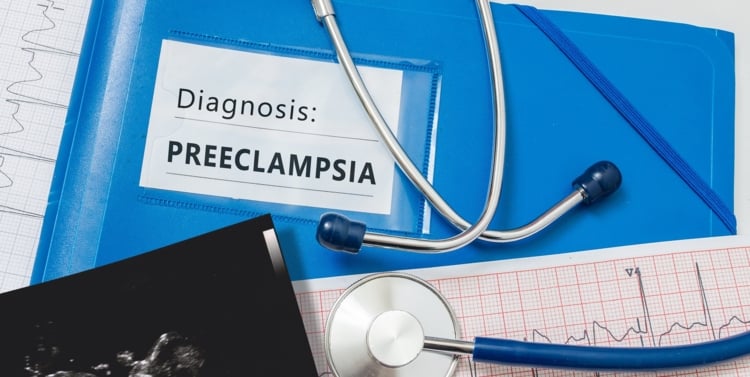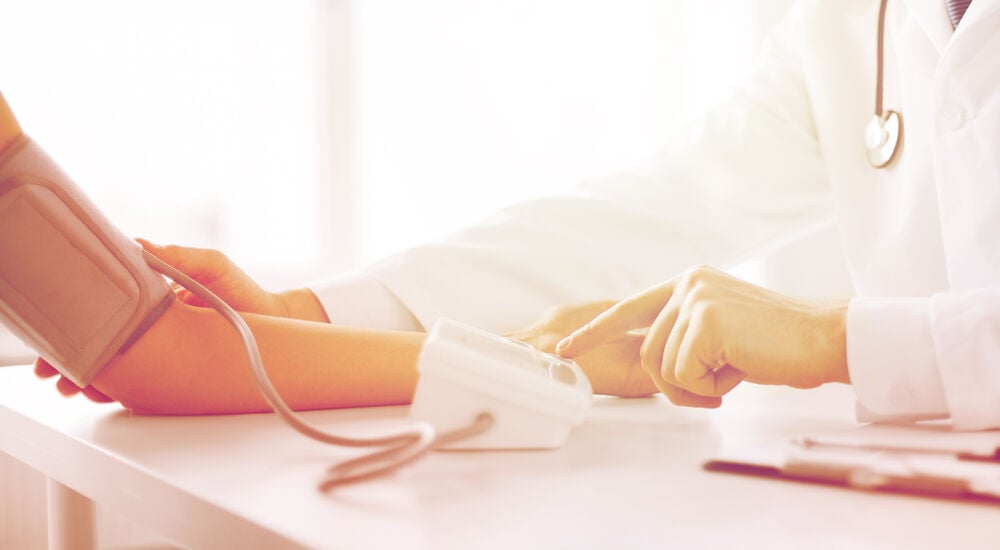-
Tracking cycle
-
Getting pregnant
-
Pregnancy
-
Help Center
-
Flo for Partners
-
Anonymous Mode
-
Flo app reviews
-
Flo Premium New
-
Secret Chats New
-
Symptom Checker New
-
Your cycle
-
Health 360°
-
Getting pregnant
-
Pregnancy
-
Being a mom
-
LGBTQ+
-
Quizzes
-
Ovulation calculator
-
hCG calculator
-
Pregnancy test calculator
-
Menstrual cycle calculator
-
Period calculator
-
Implantation calculator
-
Pregnancy weeks to months calculator
-
Pregnancy due date calculator
-
IVF and FET due date calculator
-
Due date calculator by ultrasound
-
Medical Affairs
-
Science & Research
-
Pass It On Project New
-
Privacy Portal
-
Press Center
-
Flo Accuracy
-
Careers
-
Contact Us
Rare but Serious: Everything You Need to Know About Postpartum Preeclampsia


Every piece of content at Flo Health adheres to the highest editorial standards for language, style, and medical accuracy. To learn what we do to deliver the best health and lifestyle insights to you, check out our content review principles.
What is postpartum preeclampsia?
There is a lot to consider when learning about postpartum health and what a woman’s body may experience in the “fourth trimester.” Though some conditions like infection and abnormal vaginal bleeding are more common, others are not. One of such conditions is postpartum preeclampsia.
Though many women pay close attention to their health during pregnancy, they may not be as familiar with health concerns in the postpartum period.
Postpartum preeclampsia is a rare but serious condition that can arise from few hours to even 6-12 weeks after childbirth. It shares many of the same symptoms as preeclampsia; a slightly more common condition that women may experience during pregnancy (even Beyoncé had it!). Although the condition is rare, complications from postpartum preeclampsia can be life threatening, which is why it’s important to know the symptoms, causes, and treatment options available to you.
What causes preeclampsia after delivery?
Doctors and scientists have struggled to find a definitive cause for why preeclampsia occurs after delivery. Some possible explanations are that women who experience postpartum preeclampsia actually suffered from preeclampsia during their pregnancy but weren’t aware of the symptoms. In other cases, women may have had the condition without displaying any symptoms until after childbirth.
What are the symptoms?

Take a quiz
Find out what you can do with our Health Assistant
There can be a lot of flurry of activity in the hours after giving birth. With family members visiting, nurses checking in on the baby, and you taking time to rest and to bond your child, you may think to worry about your own health. However, if you notice changes in your health or how you are feeling, you may want to consider if you are experiencing symptoms of postpartum preeclampsia.
Postpartum preeclampsia is characterized by high blood pressure (systolic blood pressure (SBP) greater than or equal to 140 mm Hg or a diastolic blood pressure (DBP) greater than or equal to 90 mm Hg or higher, on two occasions at least 4 hours apart in a previously normotensive patiens) and excesses urine protein in women who have recently given birth.
The condition only affects the mother. Once you deliver your baby, they are not affected by postpartum preeclampsia or related complications. Postpartum preeclampsia can occur in women whether or not they suffered from high blood pressure (preeclampsia) during their pregnancy.
Other most common symptoms of postpartum preeclampsia include:
- Pain in the stomach or abdominal area
- Feeling nauseous or experiencing vomiting
- Having a severe headache
- Weakness or malaise
- Altered mental status
- Swelling (edema)
- Visual disturbances, like seeing spots or blurred vision
- Experiencing difficulty breathing or shortness of breath.
In most cases of postpartum preeclampsia, symptoms will appear shortly after a woman gives birth. If you have recently given birth and are concerned about postpartum preeclampsia, you may begin to see symptoms in as early as a few hours to up to three days following delivery. However, according to the Preeclampsia Foundation, some women may even experience postpartum preeclampsia symptoms as late as six or even twelve weeks after delivery.
These symptoms are like warning signs for postpartum preeclampsia. If you have any of these symptoms following the birth of your child, let your health care provider know as soon as possible. If you can’t reach someone in your postpartum care team, call 911 and let them know that you are postpartum.
Even if you are unsure of the severity of your symptoms, ask anyways or go directly to the emergency department to get checked out by a professional. Only a doctor can diagnose postpartum preeclampsia and determine a plan for symptom management and treatment.
Since the symptoms of postpartum preeclampsia often appear quite soon after giving birth most commonly during first 72 hours but can appear even after 6-12 weeks postpartum, women and their health teams may not notice the symptoms right away. The condition is serious enough that it requires medical intervention. If left untreated, the condition can lead to life-threatening complications like seizures and stroke.
Risk factors
Though the cause of postpartum preeclampsia isn’t very well understood, there are some common risk factors that may increase a woman’s likelihood of developing the condition after childbirth.
If you have recently given birth, you may be at a higher risk for developing postpartum preeclampsia if you:
- Experienced high blood pressure or preeclampsia during your pregnancy, after your 20th week.
- Suffered from chronic high blood pressure before your pregnancy.
- Suffer from obesity or diabetes mellitus.
- Carried more than one child during your pregnancy (multiple gestation).
- Are 35 years or older, or younger than 20 years old.
- Have a family history of preeclampsia or postpartum preeclampsia.
- Are of African-American descent.
Even if you don’t have any of these related risk factors, you may still suffer from postpartum preeclampsia. Remember to familiarize yourself with the symptoms and ask for help or guidance from your care providers if you do have any of the risk factors.
Possible complications
Time is of the essence if you are experiencing symptoms of postpartum preeclampsia and delaying diagnosis or treatment can risk your life. Because of the serious nature of postpartum preeclampsia — and the high risk of medical complications arising as a result of the condition — you should immediately report any symptoms to your health care provider. Some serious complications that can can arise from postpartum preeclampsia are:
- Severe postpartum preeclampsia, including a worsening of symptoms
- Organ damage, including damage to the kidneys, liver and eyes
- HELLP syndrome
- Seizures
- Stroke
- Coma.
These complications typically arise only in the most severe cases of postpartum preeclampsia but they should be taken seriously nonetheless. It may bring you peace of mind however to know that postpartum preeclampsia only affects the mother following childbirth. Rest assured that there is no related risk of complication to your baby if you do happen to suffer from the condition or any related complications.
Treatment
The good news is that the sooner that your doctor can diagnose postpartum preeclampsia, the sooner they can manage the symptoms and deliver treatment, if necessary. Your doctor may give you oxygen or medication to reduce the risk of further postpartum preeclampsia complications like organ damage and stroke. If you are prescribed medication and are breastfeeding, be sure to discuss any questions or concerns with your health care provider. You may also wish to talk to your doctor about your preeclampsia postpartum care needs and any precautions you should take during your recovery.
Even though the likelihood of experiencing postpartum preeclampsia is low, the risks related to the condition are high. Knowledge is power! Take the time to learn about recovering from childbirth in the same way you might want to learn about preparing for childbirth.


Hey, I'm Anique
I started using Flo app to track my period and ovulation because we wanted to have a baby.


The Flo app helped me learn about my body and spot ovulation signs during our conception journey.


I vividly
remember the day
that we switched
Flo into
Pregnancy Mode — it was
such a special
moment.
Real stories, real results
Learn how the Flo app became an amazing cheerleader for us on our conception journey.




